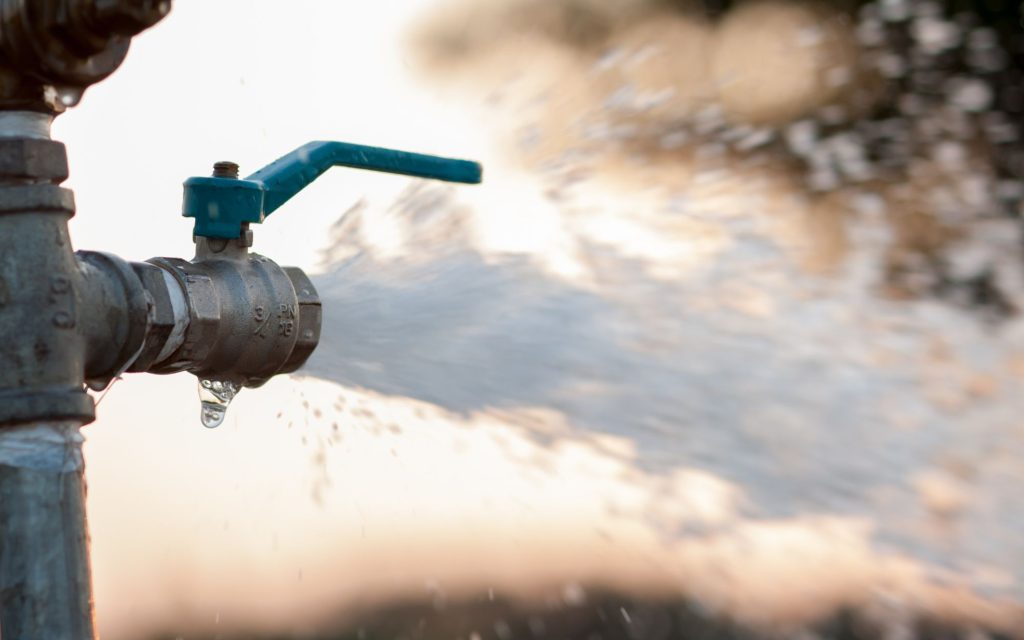Installing an internal water treatment system is essential to ensure uninterrupted, trouble-free operation, as small breaks in pipes can lead to contamination by pathogenic bacteria.
Drinking water is distributed to US homes and businesses through a vast network of 2.2 million kilometers of transmission lines and distribution pipelines. These pipes must operate efficiently because access to clean drinking water is crucial to our health and daily functioning. However, water main breaks are a common problem in the US, with thousands of cases reported yearly. While an inconvenience to residents and businesses, these incidents can significantly impact food and beverage establishments that require potable water to operate. Statistics show that between 2012 and 2018, the rate of water main breaks in North America increased by 27%, reaching approximately 14 breaks per 100 miles per year.
This figure is concerning not only because of the loss of drinking water but also because of the serious public health implications. When a water main breaks, water pressure drops can occur, leading to water supply contamination. This can allow harmful substances, such as bacteria, to enter the water, posing a serious consumer risk. As a result, many food and beverage establishments are forced to close until the water supply is deemed safe for use. For example, in Cabool, Missouri, two major water main breaks during the winter of 1989-90 resulted in 243 cases of bloody diarrheal caused by E. coli infection. This outbreak was one of the largest cases of waterborne E. coli on record in the US.
Water pipelines in use currently vary considerably in age and material. As a result, no single reason can be attributed to pipe failure. Pipes get damaged due to a cumulative impact of several factors. Some of these are:

The USEPA estimates that it will cost $312.6 billion to replace or renovate aging and deteriorating drinking water pipes, which could take up to 20 years. Considering the financial and health implications, one would expect a pressing need to modernize the country’s drinking water infrastructure. Unfortunately, the situation is the opposite, with repairs only being carried out in response to problems. The slow process of detecting and repairing breaks leaves many people without access to safe drinking water.
When a main breaks, there is often a loss of water pressure, and boil water advisories (BWAs) are issued by local authorities. This means that residents and businesses are advised not to use tap water at all. Local restaurants are particularly affected, as they often lack their own water treatment facilities and may be forced to close for the duration of the advisory. For those that choose to remain open, using alternatives such as bottled water comes at a considerable cost.
When a BWA is issued, all water equipment, such as soft drinks and ice machines, must be thoroughly cleaned and any pre-made products discarded. In November 2019, a BWA was issued in Arlington, VA, prompting a local Starbucks to stop all beverage service. Another nearby restaurant had to spend a significant amount of money on bottled water, ice, and canned soft drinks and pay overtime wages to staff to clean and sanitize equipment and utensils.
Given the significant financial impact of water main breaks in food and beverage establishments, installing an internal UV water treatment system for food and beverage is highly advisable to ensure uninterrupted, trouble-free operation. Even small breaks in pipes can lead to water supply contamination by pathogenic bacteria such as giardia, which are common in the environment regardless of the age of the pipes.
UV purification systems effectively combat waterborne microorganisms, making them an essential investment for any catering establishment. Unlike other purification methods, UV systems require no secondary steps and have a proven track record of effectiveness in decontaminating water. Catering establishments should prioritize implementing in-house water treatment measures to avoid the serious consequences they will inevitably suffer if they do not use them.
Share: